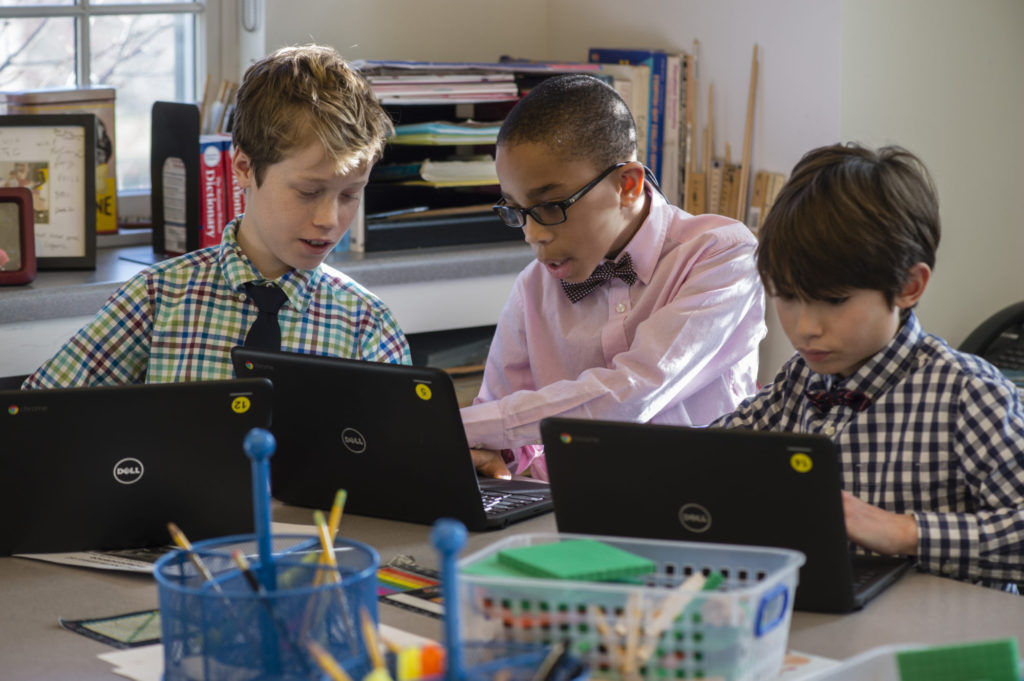 Fourth grade is challenging for many students. Academic expectations are higher than they were in third grade, and children work more independently. Friendships are more important and more complicated. There is increased academic and social pressure. To help your son thrive, you want to find a school that understands the intricate relationships between academic expectations, childhood development, and social dynamics while helping your child navigate the transition from third to fourth grade.
Fourth grade is challenging for many students. Academic expectations are higher than they were in third grade, and children work more independently. Friendships are more important and more complicated. There is increased academic and social pressure. To help your son thrive, you want to find a school that understands the intricate relationships between academic expectations, childhood development, and social dynamics while helping your child navigate the transition from third to fourth grade.
How is a classroom structured to help students transition successfully to fourth grade?
According to the Association for Supervision and Curriculum Development, a national organization empowering educators to achieve excellence in learning, teaching, and leading, schedules and routines are especially important in the fourth grade. By setting clear expectations in the classroom, students are more at ease and focused on learning. They remain more alert when lessons balance sitting and listening with active participation. Nine- and ten-year-olds have a lot of energy. Incorporating movement into the curriculum helps students productively expend their energy so they can concentrate on their work.

Fessenden teachers structure their classrooms to help their students thrive in fourth grade. They support their students in developing routines through interactive modeling and positive reinforcement and help their class build a safe and collaborative learning community.
Shalini Rao, Fessenden’s Director of Teaching and Learning, works closely with faculty to ensure that every student in fourth grade receives the support he needs. One way she accomplishes this goal is by facilitating the Responsive Classroom approach.
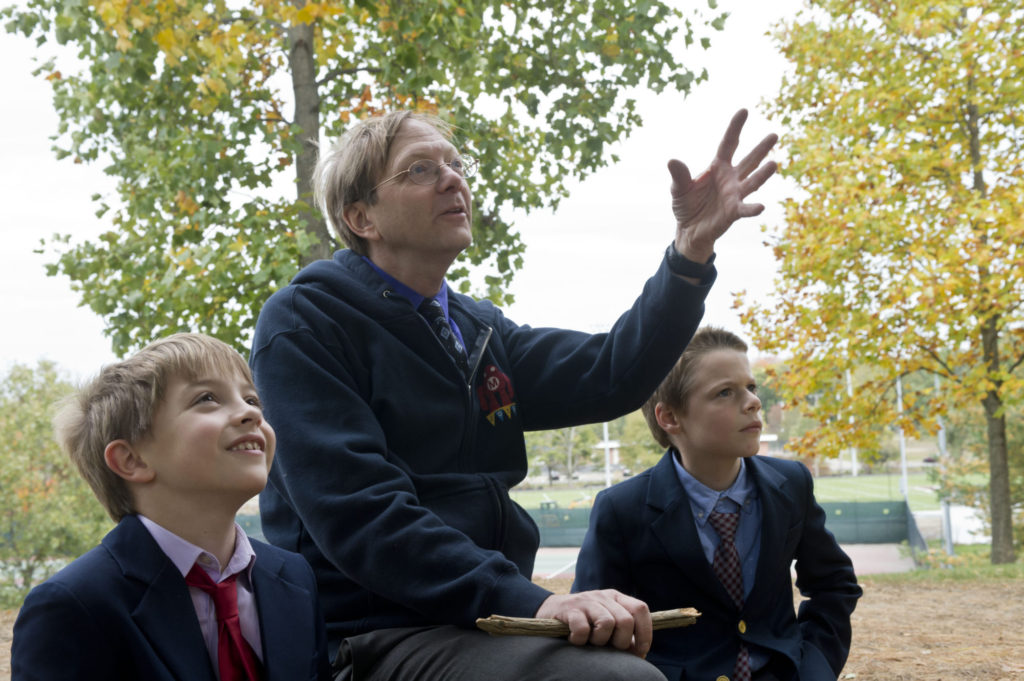
Responsive Classroom is an pedagogical approach to classroom management where learning is the priority. “The idea is that you are building a culture where classroom management and discipline don’t drive the learning,” explains Shalini. “It is about putting systems into place and creating a community that facilitates learning. It’s an approach to teaching where learning takes priority.”
There are three areas of childhood development that impact student success in fourth grade and are supported by Responsive Classroom practices.
Integrating Responsive Classroom practices creates an exceptional learning environment for many students, including fourth graders. It is a student-centered methodology designed to create a safe and engaging classroom based on research that supports three critical areas of childhood development:
1. Responsive Classroom practices support a fourth grader’s physical development by incorporating movement throughout the day.
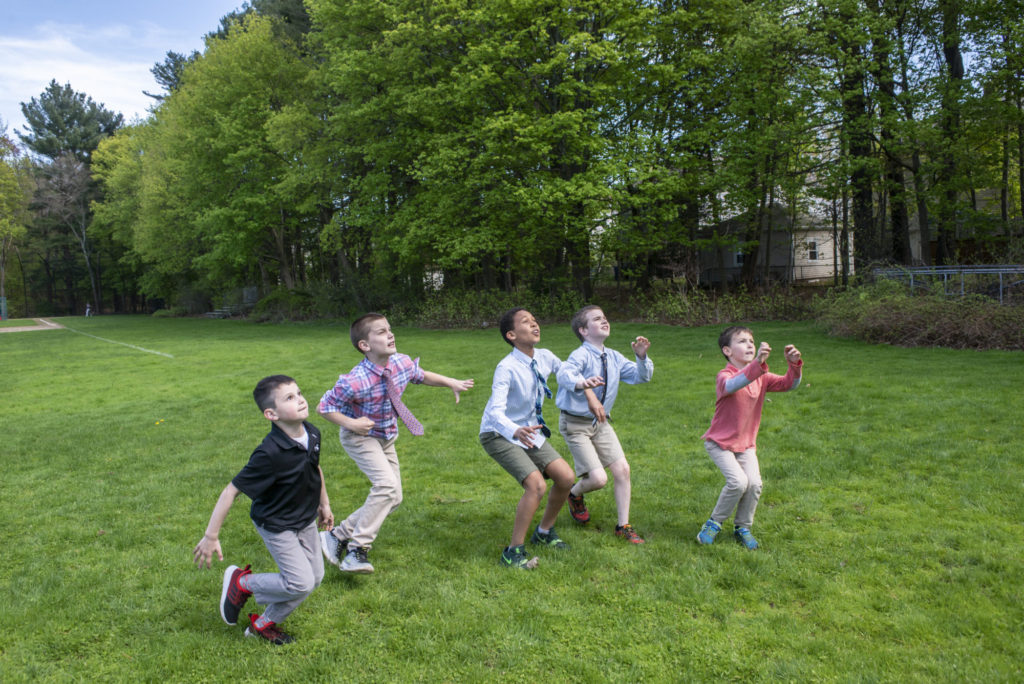
Fourth grade students are experiencing a lot of changes, not just in their environment, but in their growth and development. At this age, larger muscles are developing quickly, and handwriting often declines. Many boys enjoy the outdoors and physical challenges. They are frequently hungry and get tired easily, so classrooms must accommodate their natural rhythms.
“With this age group, it is especially important to establish a schedule that includes time for recess and outdoor play,” says Shalini. “Movement breaks, and healthy snacks help keep students focused.”
Students in fourth grade acquire a lot of new skills, and, combined with clear instructions and time to practice, minimizes frustrations. “Students are learning to use tools such as rulers, compasses, and more advanced computer programs,” shares Shalini. “Most boys enjoy these challenges, but developing new skills can be frustrating. So we build in breaks and give them a number of opportunities to practice.”
2. Responsive Classroom practices support a fourth grader’s cognitive development by carefully structuring lessons to build upon their experience.
Fourth graders are particularly good at memorizing facts, think often about abstract ideas, and take pride in their schoolwork. They are increasingly expressive, more interested in reading independently, and enjoy sharing their point of view.

“I expect my students to read for at least 30 minutes every day,” says Jamie Ames, a fourth grade teacher at Fessenden. “We also try to write every day. I want the students to take each writing assignment through multiple drafts and to read it out loud to get feedback from their peers.”
Expectations are high, and projects are much more complex in the fourth grade. “I tell my students that I want all of the work they give me to represent their best work,” explains Jamie. “But I also help them understand that it is an iterative process. The first draft is meant to be a good starting point. By sharing their work, getting feedback, and revising their work, they become better and better writers. I want them to be the best they can be, so I encourage them to compete against themselves. That fosters resilience and tenacity that will serve them well in the future.”
3. Responsive Classroom practices support a fourth grader’s social and emotional development by incorporating group work, peer tutoring, and classroom discussion.
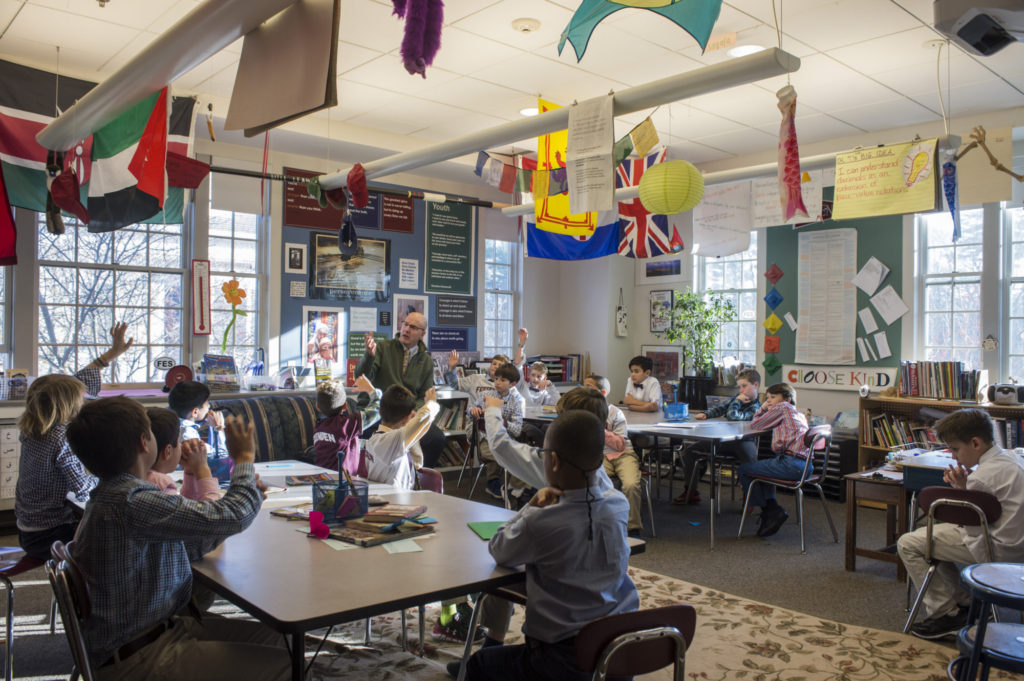 Socially and emotionally, students in fourth grade are generally happy and truthful. They have a more nuanced sense of right and wrong, and they are better able to resolve issues of fairness. They enjoy both cooperative and competitive games, which makes group work especially valuable.
Socially and emotionally, students in fourth grade are generally happy and truthful. They have a more nuanced sense of right and wrong, and they are better able to resolve issues of fairness. They enjoy both cooperative and competitive games, which makes group work especially valuable.
“Every week, I put one of the paragraphs written by a student on the SMART Board,” says Jamie. “We review it as a class. The goal of the critique is to provide the writer with feedback and information. Some of our best discussions come out of this one exercise.”
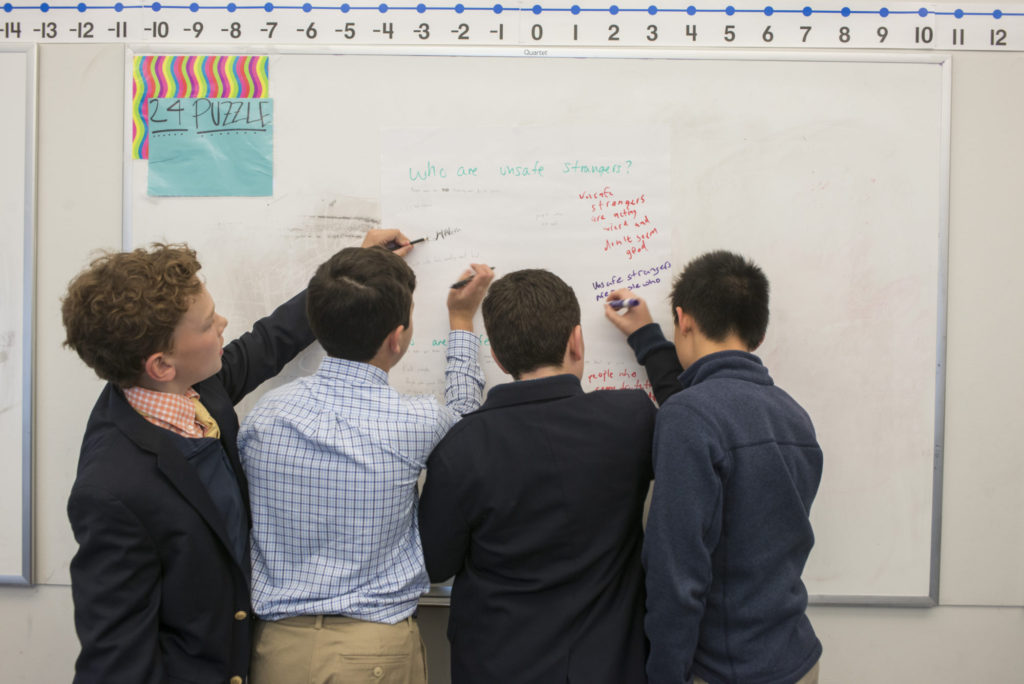
Group work, peer tutoring, and classroom discussions provide students with the opportunity to develop their conflict resolution skills. “At this age, students are becoming more independent and self-reliant,” explains Shalini. “Group activities help them learn to resolve disagreements and concerns around fairness while they discover their strengths.”
Fourth grade is an important year for any child. For many, this is when they start to discover who they are as individuals. Teachers who understand the physical, cognitive, social, and emotional growth of these students are better able to support their current needs and prepare them for future success.
If you’re looking for a school for this pivotal year in your son’s education, we encourage you to visit Fessenden and spend some time in a fourth grade classroom. Call us today at (617) 630-2300 to schedule your campus visit.





That’s a good idea to help muscles develop as well as the brain. I like the idea of my son getting physically fit. I should consider getting a school like that for him.